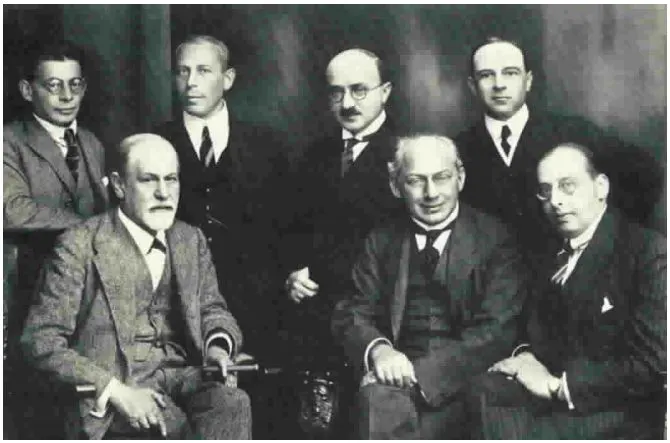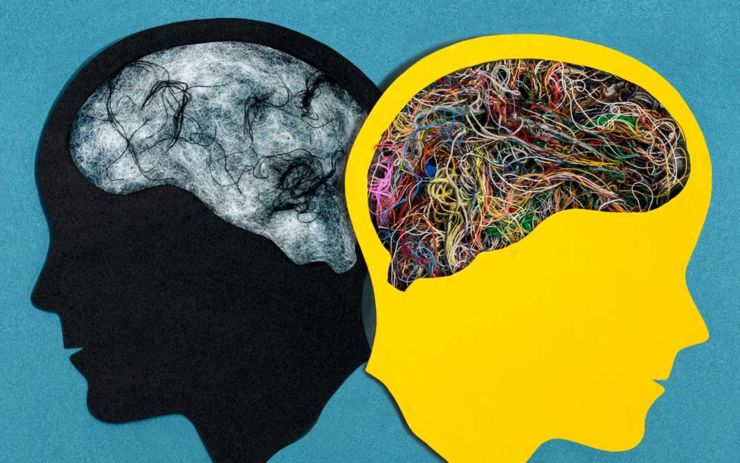Contents
Introduction

Psychodynamic Therapy: Techniques, Applications, and Effectiveness
Psychodynamic Therapy is an influential approach in psychotherapy that seeks to explore the unconscious processes influencing a person’s behavior, emotions, and thoughts. Building upon the principles of Traditional Psychoanalysis, Psychodynamic Therapy adapts and integrates these foundational ideas to address both present and past psychological conflicts. This therapy focuses on understanding the influence of early experiences and the unconscious mind, aiming to help clients gain insight into their current psychological struggles. By addressing underlying emotional conflicts, Psychodynamic Therapy facilitates meaningful change and personal growth.
This article will provide an overview of Psychodynamic Therapy, including its core principles, unique techniques, and its applications in treating various mental health conditions. We will also discuss the criticisms and limitations of this approach and how it remains a relevant and effective option for psychological treatment today.
What is Psychodynamic Therapy?
Psychodynamic Therapy is a therapeutic approach that evolved from the foundational principles of Traditional Psychoanalysis, originally developed by Sigmund Freud. While it retains some core ideas from Psychoanalysis, such as the significance of the unconscious mind, the influence of early childhood experiences, and the exploration of internal psychological conflicts, Psychodynamic Therapy differs in its focus, structure, and application.
This approach is generally more concerned with addressing present-day problems and symptoms, offering a more direct and practical way to work through emotional and relational difficulties. It emphasizes understanding how past experiences and unconscious processes affect current behavior, thoughts, and emotions, providing insight into patterns that may be causing distress.
Why Psychodynamic Therapy is Important?
Psychodynamic Therapy is essential in the field of psychotherapy because it provides a comprehensive understanding of the underlying factors that drive human behavior and emotional states. By combining insights from Traditional Psychoanalysis with contemporary therapeutic practices, it offers a versatile approach that can be tailored to suit the needs of diverse clients.
It focuses on both the conscious and unconscious mind, providing a balanced approach to understanding psychological difficulties and fostering personal growth. This makes it an effective option for those who seek a deeper understanding of their mental health and wish to resolve underlying issues.
Understanding How Psychodynamic Therapy Works
Psychodynamic Therapy aims to help clients gain insight into their unconscious conflicts and how these affect their current behavior and emotions. By exploring the interplay between experiences and present-day challenges, clients can develop a deeper understanding of their emotional world and make meaningful changes in their lives. The therapy focuses on building a strong therapeutic alliance, where clients feel safe to explore and express their innermost thoughts and feelings.
Our examination of Psychodynamic Therapy will proceed in phases: beginning with an overview of its core concepts, followed by a closer look at its essential therapeutic methods, and concluding with its relevance to various psychological conditions.
Simple Overview
Psychodynamic Therapy is centered on exploring and uncovering unconscious processes that influence an individual’s thoughts, emotions, and behaviors. The core concept is that early life experiences, particularly those involving relationships with significant figures such as parents, have a profound impact on current psychological functioning.
Real-Life Example: A client experiencing anxiety might use Psychodynamic Therapy to explore the roots of their anxiety in unresolved childhood experiences or unacknowledged emotions, leading to better self-awareness and symptom relief.
Critical Concepts
- Free Association: Similar to Traditional Psychoanalysis, free association in Psychodynamic Therapy involves clients expressing their thoughts and feelings without censorship. This technique helps uncover unconscious material influencing their current behavior and emotions.
- Interpretation: The therapist provides interpretations of the client’s thoughts, feelings, and behaviors, linking them to unconscious conflicts and experiences. This helps clients gain insight into their underlying issues and promotes self-awareness.
- Defense Mechanisms: Clients are encouraged to recognize and understand their defense mechanisms, such as denial, repression, and projection. By becoming aware of these unconscious defenses, clients can better manage their emotions and responses.
- Interpersonal Relationships: Psychodynamic Therapy often emphasizes exploring and understanding the impact of early relationships on current interpersonal dynamics. This can involve examining patterns in relationships and understanding how experiences influence current behavior.
- Transference and Countertransference: Similar to Traditional Psychoanalysis, transference involves clients projecting feelings from past relationships onto the therapist. It on the other hand, refers to the therapist’s emotional responses to the client. Understanding these dynamics can provide insights into unresolved conflicts and enhance therapeutic progress.
Detailed Assessment
Psychodynamic Therapy incorporates cognitive, emotional, and relational elements to provide a holistic understanding of psychological issues.
- Cognitive Foundations: Psychodynamic Therapy delves into how unconscious processes influence and shape conscious thoughts, feelings, and behaviors. While the therapy is not primarily cognitive in nature, it acknowledges that unconscious mental processes, such as hidden desires, fears, and unresolved conflicts, play a crucial role in affecting conscious awareness and decision-making.
- Experiential and Emotional Processing: The therapy places a significant emphasis on exploring repressed emotions and unresolved conflicts. Psychodynamic Therapy encourages clients to access and process emotions that may have been suppressed or avoided, often stemming from early life experiences. By bringing these repressed emotions and unresolved conflicts into conscious awareness.
- Insight Development: Insight development is a central aspect of Psychodynamic Therapy. The therapy focuses on helping clients gain a deeper understanding of their unconscious processes and how these influence their conscious thoughts, feelings, and behaviors. Through therapeutic techniques such as free association, dream analysis, and the exploration of transference and resistance, clients can uncover hidden aspects of their psyche.
Difference between Psychoanalysis and Psychodynamics
| Aspect | Psychoanalysis | Psychodynamics |
| Definition | A comprehensive theory and therapeutic approach focusing on unconscious processes and early childhood experiences. | A broader term encompassing theories and approaches that emphasize unconscious processes and the influence of experiences on current behavior. |
| Focus | In-depth exploration of unconscious motivations, childhood experiences, and psychosexual stages. | Exploration of unconscious processes and internal conflicts, often drawing on but not limited to Freud’s ideas. |
| Key Figures | Sigmund Freud, Anna Freud, Melanie Klein, Carl Jung | Sigmund Freud, Erik Erikson, Karen Horney, object relations theorists |
| Main Concepts | Id, ego, superego, defense mechanisms, Oedipus complex, psychosexual stages | Unconscious mind, defense mechanisms, early childhood influences, internal conflicts, object relations |
| Goal | To bring unconscious thoughts and feelings to consciousness and resolve internal conflicts through insight. | To understand and resolve unconscious conflicts and improve mental functioning through exploring the psyche and early experiences. |
| Application | Uses techniques such as free association, dream analysis, and transference to uncover and address unconscious issues. | Includes a range of methods and techniques based on psychodynamic principles, such as exploring unconscious thoughts and experiences. |
| Methods | Free association, dream analysis, interpretation of resistance and transference. | Techniques vary but often include exploring past experiences, unconscious processes, and patterns of behavior. |
| Outcome | Insight into unconscious motivations and resolution of internal conflicts, leading to symptom relief and personality change. | Improved self-understanding, resolution of internal conflicts, and better management of psychological issues.. |
Relationship between Psychodynamics and other Humanistic theories
Psychodynamics and other humanistic theories approach the understanding of human behavior from different perspectives, yet they share common goals of exploring personal growth and self-understanding. Psychodynamic theory, rooted in Freudian concepts, emphasizes the influence of unconscious processes and early childhood experiences on behavior. It focuses on internal conflicts and the resolution of these conflicts as key to psychological health. In contrast, humanistic theories, such as those developed by Carl Rogers and Abraham Maslow, prioritize conscious experiences, personal agency, and the inherent drive towards self-actualization.
Humanistic approaches celebrate the individual’s capacity for self-improvement and the importance of self-fulfillment in the therapeutic process. While psychodynamics delves into the past and unconscious motivations, humanistic theories emphasize the present and the potential for positive growth. Despite these differences, both perspectives acknowledge the significance of understanding the self and the impact of personal experiences on psychological well-being.
Notable Figures in Psychodynamic Therapy

- Sigmund Freud: Sigmund Freud, the pioneering figure of Psychoanalysis, established foundational theories on the unconscious mind, defense mechanisms, and the structure of personality. His work introduced concepts like id, ego, and superego, shaping the framework for Psychodynamic Therapy.
- Carl Jung: Carl Jung developed Analytical Psychology, expanding the field with innovative concepts such as the collective unconscious and archetypes. His ideas introduced the notion that shared, universal symbols and themes influence human behavior and experience.
- Melanie Klein: Melanie Klein built upon Freud’s theories with her focus on object relations, highlighting the crucial role of early relationships and internalized object representations in psychological development.
- Donald Winnicott: Known for his theories on the “true self” and “false self,” as well as the concept of the “good enough mother,” which have influenced contemporary psychodynamic practices.
Theories influenced by Psychodynamics
- Existential Therapy: Combines existential philosophy with psychoanalytic theory, exploring how existential concerns such as meaning, freedom, and death influence psychological development and therapy.
- Mindfulness-Based Cognitive Therapy (MBCT): Combines cognitive behavioral techniques with mindfulness strategies, influenced by psychodynamic concepts of self-awareness and emotional processing, to prevent relapse in depression and other mental health conditions.
- Schema Therapy: Created by Jeffrey Young, this therapy integrates cognitive, behavioral, and psychodynamic elements to address deep-seated patterns or “schemas” that develop from early life experiences and influence current behavior and emotions.
- Jungian Therapy: Developed by Carl Jung, this theory explores the collective unconscious, archetypes, and individuation, extending Freud’s ideas of the unconscious and adding a more symbolic and cultural dimension.
- Object Relations Theory: Focuses on the internalized relationships between the self and others, emphasizing how early interactions with caregivers shape personality and emotional experiences.
Applications of Psychodynamic Therapy in Treating Mental Health Disorders

Depression
Psychodynamic Therapy has proven to be effective in treating depression by helping clients explore and understand unresolved conflicts, repressed emotions, and early relational experiences that may be contributing to their depressive symptoms.
Example: A client suffering from chronic depression might discover that their persistent feelings of worthlessness and sadness are linked to unresolved grief from losing a parent in childhood.
Image Source: maxsolutions.com.au

Anxiety Disorders
Psychodynamic Therapy helps individuals with anxiety disorders by uncovering the underlying psychological conflicts and defense mechanisms that contribute to their anxiety.
Example: A person with generalized anxiety disorder (GAD) might use Psychodynamic Therapy to explore how unresolved fears or anxieties from childhood, such as fear of abandonment or a critical parent, continue to manifest as anxiety in adulthood.
Image Source: eleanorhealth.com

Personality Disorders
Psychodynamic Therapy is particularly effective for treating personality disorders, such as Borderline Personality Disorder (BPD) or Narcissistic Personality Disorder (NPD), as it delves into deep-seated emotional conflicts and relational patterns that shape personality.
Example: For someone with Borderline Personality Disorder, Psychodynamic Therapy might focus on understanding attachment issues and the fear of abandonment, which often drive intense emotional reactions and unstable relationships.
Image Source: bhtherapygroup.com/

Relationship Issues
Psychodynamic Therapy is highly effective in addressing relationship issues by helping clients understand how unconscious dynamics from their experiences influence their current interpersonal relationships.
Example: A couple struggling with chronic miscommunication and conflict might use Psychodynamic Therapy to explore how their past relationships with caregivers or previous partners influence their current dynamics.
Image Source: astrotalk.com
Common Myths About Psychodynamic Therapy
| Myth | Reality |
| Psychodynamic Therapy is just a modern name for Psychoanalysis. | While Psychodynamic Therapy is rooted in Psychoanalysis, it is distinct in its techniques, duration, and focus on present-day issues. |
| Psychodynamic Therapy is not evidence-based. | There is increasing empirical support for Psychodynamic Therapy, particularly for its effectiveness in treating depression, anxiety, and personality disorders. |
| Psychodynamic Therapy is only for those interested in exploring their past. | Although it involves exploring experiences, it also focuses on understanding current behaviors and relationships. |
| Psychodynamic Therapy ignores the client’s current life context and focuses solely on the unconscious mind. | Psychodynamic Therapy integrates an understanding of both the unconscious mind and current life circumstances, helping clients connect experiences to present behaviors and relationships. |
Criticisms and Limitations
- Lack of Empirical Evidence: Psychodynamic Therapy has faced criticism for having less empirical support compared to more widely researched approaches, such as Cognitive Behavioral Therapy (CBT). Historically, this therapy was seen as less evidence-based due to the difficulty of quantifying and measuring unconscious processes and psychodynamic constructs.
- Potential for Intensity The process of exploring deep-seated emotional conflicts and unconscious material in Psychodynamic Therapy can be quite intense and emotionally demanding. This in-depth exploration may involve confronting difficult and sometimes painful memories or issues from the past.
- Focus on Unconscious Processes: Critics argue that Psychodynamic Therapy’s emphasis on unconscious processes may sometimes overshadow practical approaches to addressing present-day problems. The therapy’s focus on understanding the underlying, often historical, factors that influence current behavior may seem less immediately applicable to addressing specific, tangible issues.
Conclusion
Psychodynamic Therapy offers a valuable approach to understanding and resolving deep-seated emotional conflicts and unconscious processes. By integrating insights from Traditional Psychoanalysis and adapting them to contemporary therapeutic practices, Psychodynamic Therapy remains a relevant and effective option for those seeking to explore the roots of their psychological difficulties. Its techniques, such as free association, interpretation, and exploration of interpersonal relationships, help clients uncover and address unconscious conflicts, leading to personal growth and emotional healing.
References
- Freud, S. (1917). Introductory lectures on psychoanalysis. Standard Edition, Vol. 15. Hogarth Press.
- Freud, S. (1923). The ego and the id. Standard Edition, Vol. 19. Hogarth Press.
- Jung, C. G. (1961). Memories, dreams, reflections. Vintage Books.
- Klein, M. (1932). The psycho-analysis of children. Hogarth Press.
- Winnicott, D. W. (1965). The maturational processes and the facilitating environment: Studies in the theory of emotional development. International Universities Press.
- Kohut, H. (1971). The analysis of the self. International Universities Press.
- Shedler, J. (2010). The efficacy of psychodynamic psychotherapy. American Psychologist, 65(2), 98–109.
- McWilliams, N. (2011). Psychoanalytic diagnosis: Understanding personality structure in the clinical process. Guilford Press.
- Kernberg, O. (1975). Borderline conditions and pathological narcissism. Jason Aronson.
- Mitchell, S. A., & Black, M. J. (1995). Freud and beyond: A history of modern psychoanalytic thought. Basic Books.
Explore more Theories & Therapies








